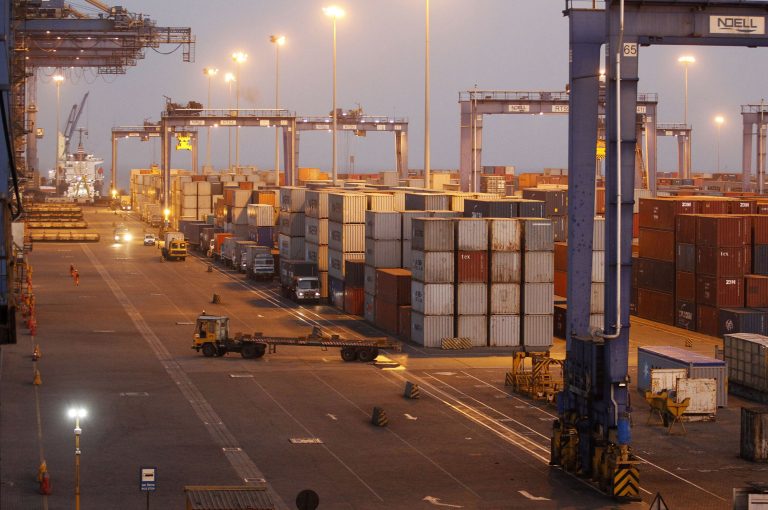Statements made by a spokesperson for the World Health Organization in the Sudan region have been used to stoke fear of a potential biological terrorism attack after a laboratory was captured by Sudanese rebels in their war against the country’s government.
The news began making headlines after Reuters issued a news wire on April 25 titled ‘High Bio-hazard Risk’ In Sudan After Laboratory Seized, WHO Says where Nima Saeed Abid, described as “the WHO’s representative in the country,” stated there is a “high risk of biological hazard” in Sudan’s capital Khartoum after the National Public Health Laboratory (NPHL) was captured during fighting.
Abid was quoted as saying, “This is the main concern: no accessibility to the lab technicians to go to the lab and safely contain the biological material and substances available.”
MORE ON PANDEMIC PATHOGENS
- The Quiet Case of Canada’s Own Virologic Scandal With the Wuhan Institute of Virology
- Ousted Canadian BSL4 Virology Lab Researcher Authored Ebola Studies With Chinese Military General
- Marburg Springs Up in Africa One Week After NIAID Vaccine Touts Phase 1 Trial Results
- Is the Establishment Chatter of ‘Disease X’ a Prelude For a Looming, New Global Pandemic?
The official was also paraphrased as stating that fighters had “seized a laboratory holding measles and cholera pathogens and other hazardous materials.”
Reporting by BBC paraphrased the WHO as also telling the outlet that “power cuts were making it impossible to properly manage material at the lab,” specifically that bags of blood are going uncooled and becoming spoiled.
Success
You are now signed up for our newsletter
Success
Check your email to complete sign up
The New Zealand Herald directly quoted Abid as stating his concern : “That is extremely, extremely dangerous because we have polio isolates in the lab. We have measles isolates in the lab. We have cholera isolates in the lab.”
“There is a huge biological risk associated with the occupation of the central public health lab in Khartoum by one of the fighting parties,” Abid added.
Tabloid-style publications like UK-based The Sun editorialized for readers that the development may have pandemic potential when it stated that “scientists have been for years warning about the danger of a virus or pathogen being released from a poorly managed biolab – especially in the wake of the pandemic.”
Not BSL3 or BSL4
Although the NPHL states on its website that it has a bacteria and a parasite laboratory, in addition to a “reference laboratory” for “epidemic viruses” and “epidemic bacteria,” according to a Google translate of the site’s Arabic text, the facility is not on the same level as one like Fort Detrick or the Wuhan Institute of Virology where pandemic pathogens are routinely experimented on.
According to website Globalbiolabs.org, an interactive map maintained by King’s College London and George Mason University, the only Biosecurity Level 3 or 4 facilities on the continent of Africa are located in the Ivory Coast or Gabon on the far west side, or South Africa, in the south, while Sudan is located in the northeast of the containment.
In fact, Saudi Arabia’s National Health Laboratory, a BSL4 lab, is geographically closer than any of the four BSL facilities in Africa.
The Public Health Emergency (PHE) website, a U.S. government website, explains on the classification system, “For example, some procedures with an infectious agent or toxin may be conducted under BSL-2 conditions, but other procedures with the same infectious agent or toxin that increase the risk to the worker or environment, such as the creation of airborne droplets or sprays, or large scale production, may require that the work be conducted under BSL-3 conditions.”
Elaborating further, the PHE explains that BSL3 labs “are used to study infectious agents or toxins that may be transmitted through the air and cause potentially lethal infection through inhalation exposure,” while BSL4 are for “infectious agents or toxins that pose a high risk of aerosol-transmitted laboratory infections and life-threatening disease for which no vaccine or therapy is available.”
Both tiers require custom-engineered equipment like positive pressure suits, buildings, airflow management, sanitation, and cabinet systems described as “extensive and supplemented by carefully designed procedures and practices.”
Combat
Sudan has been rocked by a conflict between the country’s military and a paramilitary group called the Rapid Support Forces (RSF) since April 15. Reuters states that 459 people have died and more than 4,000 have been injured in the fighting, according to WHO data.
However, the news of the lab being captured and becoming inaccessible came just one day after U.S. Secretary of State Antony Blinken announced that a 72 hour ceasefire had come into effect, according to The Guardian.
The conflict and the situation in the city has been significant enough that U.S. Forces evacuated staff members of the U.S. Embassy in Khartoum on April 23, the Department of Defense stated in a release.
Although some messaging on the fall of the NPHL has been colored to sound as if the facility had fallen into the hands of the RSF, the original Reuters report was carefully caveated to state that Abid was “declining to specify which side had seized the facility” when asked to clarify.
Biosecurity labs proliferating
Some comments circulating on social media surrounding the event attempted to draw a connection between the capture of the NPHL and a series of U.S.-funded biolabs in Ukraine that began to make headlines after the Russian invasion in early 2022, but Ukraine does not host any BSL3 or BSL4 labs either.
The Global Biolabs Report 2023 issued by King’s College and George Mason University explained that the development of BSL3 and BSL4 labs has rapidly expanded, “By the beginning of 2023, that number had increased by ten to 69 labs. There are 51 BSL4 labs in operation, three under construction, and 15 planned, all spread over 27 countries.”
The majority are emerging in Southeast Asia and India.
The Report adds, “Of the 66 labs where ownership data is available, 41 are government owned public health labs, 13 are primarily defence labs, ten are university-based research labs, and two labs are privately owned.”
“A significant majority (54/65) of the labs where data is available focus their work on human health. Seven labs focus solely on animal-related research, and four conduct both types of research. Of the 69 BSL4 labs, 51 are operational, 15 are planned, and three are under construction,” the Report continues.
Building a virus
Pathogenic research conducted at BSL3 and BSL4 labs can be significant.
In November 2020, as the world was caught off guard by the Coronavirus Disease 2019 (COVID-19) pandemic, University of North Carolina virologist Ralph Baric, told Italian media outlet Rai that “we had no access to the viruses in China. All we had was access to the sequence.”
Baric explained, “And so you can chemically synthesize the sequence of the virus in the laboratory and make the virus sequence and then recover the virus.”
In its segment, Rai described Baric as not only “one of the greatest synthetic virus building experts” in the world, but “the greatest coronavirus expert in the world” and a man who worked extensively with the Wuhan Institute’s Shi Zhengli on the development of novel coronaviruses to “construct a hybrid virus.”
Baric elaborated when Rai questioned him about the “chimera” created in partnership with the Chinese Communist Party’s BSL4 lab, “The only gain of function that occurred in that virus is that we changed its antigenicity. And what that data tells you is that any vaccine or antibody that you’d made against the original virus from 2003 [SARS-CoV] wasn’t going to protect the public from this new virus if it should emerge in the future.







